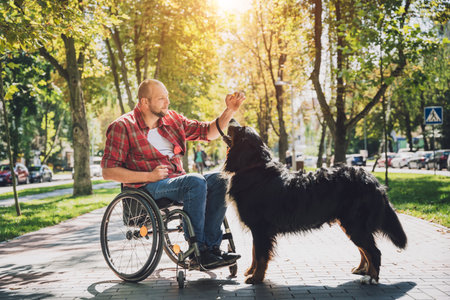Understanding Parkinson’s Disease and Daily Life Challenges
What is Parkinson’s Disease?
Parkinson’s Disease (PD) is a progressive neurological disorder that affects movement and coordination. In the United States, it is estimated that nearly one million people are living with PD. The main symptoms include tremors, stiffness, slowness of movement, and balance difficulties. As the disease advances, these symptoms can significantly impact daily routines and independence.
How Parkinson’s Disease Impacts Daily Living
People with PD often face obstacles in their everyday lives that can affect their ability to live independently. The challenges vary from person to person, but some common areas of difficulty include:
- Getting dressed or grooming
- Preparing meals and eating
- Writing or using small objects
- Moving around the house safely
- Participating in social activities
Common Obstacles for Americans Living with PD
| Daily Activity | Typical Challenge | Impact on American Lifestyle |
|---|---|---|
| Dressing | Trouble with buttons, zippers, or pulling clothes on/off | Reduced ability to get ready for work or social events independently |
| Meal Preparation | Difficulties chopping, stirring, or carrying items in the kitchen | Relying more on takeout or prepared foods; less home cooking |
| Driving and Transportation | Slowed reaction time and impaired motor control | Challenges keeping up with an active lifestyle or running errands independently |
| Social Engagement | Anxiety about mobility issues in public spaces or group settings | Avoidance of community gatherings, church events, or volunteering opportunities |
| Household Tasks | Trouble sweeping, vacuuming, or doing laundry due to balance issues and fatigue | Difficulties maintaining a clean and organized home environment |
The Importance of Addressing These Challenges
Navigating these daily hurdles can be frustrating not only for those living with Parkinson’s but also for their families and caregivers. Because American culture values independence and active participation in community life, these obstacles can affect self-esteem and quality of life. Recognizing how PD impacts day-to-day living is the first step toward finding practical solutions that help maintain as much independence as possible.
2. The Role of Occupational Therapy for Parkinson’s Disease
How Occupational Therapy Supports People with Parkinson’s Disease
Occupational therapy (OT) plays a crucial role in helping people with Parkinson’s disease (PD) live more independently and comfortably. In the United States, occupational therapists work closely with individuals to identify their unique challenges and create strategies that fit their everyday routines. The goal is to help people with PD maintain or improve their ability to do daily tasks, from getting dressed to preparing meals.
Personalized Care Plans
Each person’s experience with Parkinson’s disease is different, so U.S. occupational therapists design personalized care plans tailored to individual needs and goals. This approach means that therapy sessions focus on what matters most to the person—whether it’s being able to write, cook, drive, or participate in hobbies. Therapists often visit clients’ homes or work environments to see firsthand what changes can make daily life easier and safer.
Examples of Personalized OT Goals
| Daily Challenge | OT Intervention Example | Expected Benefit |
|---|---|---|
| Dressing independently | Recommend adaptive clothing and dressing tools | Easier and safer self-care |
| Handwriting difficulties | Introduce writing aids and hand exercises | Improved communication and confidence |
| Meal preparation | Organize kitchen layout; teach energy conservation techniques | Increased independence and safety while cooking |
| Mobility around the home | Suggest home modifications like grab bars or ramps | Reduce fall risk and enhance mobility |
| Fatigue management | Create a daily schedule balancing activity and rest | Better energy levels throughout the day |
Goal Setting Together with Clients and Families
A big part of OT in the U.S. is setting realistic goals together with clients and their families. Therapists listen carefully to understand what activities are most important, then break down big challenges into small, manageable steps. Progress is tracked regularly, and plans are updated as needs change.
Evidence-Based Approaches Used by U.S. Occupational Therapists
American occupational therapists use evidence-based practices—meaning they rely on research and proven methods—to support people with PD. Some common strategies include:
- Cognitive training: Techniques to help with memory, attention, and problem-solving.
- Task simplification: Teaching ways to make complicated activities simpler and less tiring.
- Sensory strategies: Helping individuals manage issues like tremors or sensitivity through specific exercises.
- Adaptive equipment: Recommending tools such as weighted utensils or shower chairs for greater independence.
- Home safety assessments: Evaluating living spaces to reduce fall hazards and improve accessibility.
The Value of Ongoing Support
Occupational therapy doesn’t stop after one visit. Therapists provide ongoing support, adapting plans as symptoms change over time. They also educate families on how best to assist their loved ones without taking away independence. By focusing on both immediate needs and long-term well-being, OT helps people with Parkinson’s disease enjoy fuller lives every day.
![]()
3. Enhancing Activities of Daily Living (ADLs) with OT Interventions
Supporting Self-Care Tasks
Occupational therapists (OTs) play a key role in helping people with Parkinson’s disease stay independent in their daily self-care routines. Simple activities like getting dressed, bathing, and grooming can become challenging as symptoms progress. OTs use personalized strategies and adaptive tools to make these tasks easier and safer.
| Self-Care Task | Common Challenge | OT Strategy or Tool |
|---|---|---|
| Dressing | Tremors, stiff fingers | Use of button hooks, zipper pulls, and Velcro clothing |
| Bathing/Showering | Poor balance, fatigue | Install grab bars, use shower chairs, non-slip mats |
| Grooming | Tremor, slow movements | Electric toothbrushes/razors, weighted hairbrushes |
Improving Mobility at Home
Maneuvering around the house can be tricky for those with Parkinson’s. OTs suggest home modifications and mobility aids that fit American living environments, such as single-family homes or apartments with stairs.
- Clear Pathways: Rearranging furniture to create wide, obstacle-free paths for easier movement.
- Stair Safety: Adding handrails on both sides of staircases and using brightly colored tape to mark step edges.
- Adaptive Equipment: Recommending canes or walkers with rubber tips for extra stability on hardwood floors or tiles.
Making Meal Preparation Easier
Meal prep is an important part of American daily life, whether it’s making breakfast or preparing dinner for family. Parkinson’s can make it hard to chop veggies or stir food safely. OTs introduce adaptive kitchen tools and energy-saving techniques:
| Kitchen Task | Challenge | OT Solution |
|---|---|---|
| Chopping & Cutting | Tremor, weak grip | Use rocker knives, non-slip cutting boards, food processors |
| Pots & Pans Handling | Lack of strength/control | Lightweight cookware with large handles, pot stabilizers |
| Opening Jars/Cans | Difficult fine motor control | Automatic jar openers, easy-grip can openers |
| Avoiding Fatigue During Cooking | Easily tired by standing long periods | Sit on a high stool at the counter; prep ingredients ahead of time; use slow cookers or instant pots for easy meals |
Managing Household Chores and Routines
Tidying up and managing daily chores are part of most American households. OTs help clients break down chores into smaller steps and suggest ways to pace activities throughout the day:
- Laundry: Use rolling laundry baskets; sort clothes while sitting down.
- Dishes: Wash dishes while seated; use dishwasher racks that slide out easily.
- Pacing: Spread out chores throughout the week instead of doing everything in one day to avoid exhaustion.
The Role of Adaptive Tools in Everyday Life
The right adaptive equipment can make a big difference in staying active and independent at home. Below is a quick reference table for common adaptive tools recommended by OTs:
| Tool/Device Name | Main Purpose/Use Case |
|---|---|
| Reacher/Grabber Tool | Picks up items from floor or high shelves without bending/stretching |
| Sock Aid/Dressing Stick | Makes putting on socks/shoes/clothes easier |
| Cushioned Jar Opener | Adds grip strength for opening jars/bottles |
| Bendable Utensils | Makes eating more comfortable if hand movement is limited |
Empowering Independence in Daily Life
The main goal of occupational therapy is to empower individuals with Parkinson’s to continue participating in meaningful everyday activities. With the right strategies and tools tailored to each person’s needs and American lifestyle habits, living independently remains possible for longer.
4. Community Engagement and Promoting Independence
How Occupational Therapy Supports Community Participation
Occupational therapists (OTs) play a vital role in helping people with Parkinson’s disease stay active and involved in their communities. By focusing on practical strategies, OTs empower individuals to participate in activities they enjoy, maintain social connections, and handle everyday tasks more independently.
Transportation: Getting Around Safely
For many Americans, getting around the neighborhood or city is key to staying connected. OTs help people with Parkinson’s explore safe transportation options. They can recommend adaptive devices for driving, provide resources about accessible public transit like paratransit services, and teach safe techniques for using rideshare apps such as Uber or Lyft.
| Transportation Option | Description | U.S. Example/Resource |
|---|---|---|
| Public Transit | Buses and trains with accessibility features | ADA-compliant city buses; local transit authority websites |
| Paratransit Services | Door-to-door transportation for those with disabilities | Dial-a-Ride, Access Services (Los Angeles) |
| Rideshare Apps | On-demand transportation via smartphone apps | Uber WAV (Wheelchair Accessible Vehicles), Lyft Assist |
| Adaptive Driving Programs | Special training and vehicle modifications for safe driving | AARP Driver Safety, local rehabilitation hospitals |
Leisure Activities: Staying Active and Engaged
Staying involved in leisure activities helps people with Parkinson’s boost mood and manage symptoms. OTs help clients discover adapted hobbies—like joining a community gardening club, participating in group exercise classes designed for Parkinson’s (such as Rock Steady Boxing or Dance for PD), or enjoying arts and crafts at a local senior center.
Popular Leisure Programs in the U.S.
- Rock Steady Boxing: Non-contact boxing classes tailored for people with Parkinson’s—available at YMCAs and community centers nationwide.
- Parks & Recreation Centers: Offer adapted fitness classes, swimming, and art programs for adults with mobility challenges.
- Dance for PD: Dance classes specifically created for those living with Parkinson’s Disease—offered in major cities across the country.
Social Interactions: Building Connections and Support Networks
Maintaining social relationships can be challenging as Parkinson’s progresses. OTs coach clients on communication strategies, help set up video calls to connect with family or friends, and suggest joining support groups. These groups offer emotional support and valuable information about managing daily life.
Support Resources for Social Connection
- Parkinson’s Foundation Helpline: 1-800-4PD-INFO provides information and connects people to local resources.
- Parks & Recreation Support Groups: Many city-run community centers host regular meetings for people with Parkinson’s and their caregivers.
- Online Communities: Platforms like Facebook Groups (“Parkinson’s Support USA”) and the Michael J. Fox Foundation forum allow people to share experiences and tips.
The Role of OT in Promoting Independence
Ultimately, occupational therapists help people with Parkinson’s build confidence to engage in their community by teaching adaptive strategies, recommending helpful devices, connecting them to American programs, and encouraging participation in meaningful activities. This support enables individuals to live fuller lives while maintaining their independence.
5. Accessing Occupational Therapy Services in the U.S.
Understanding the Healthcare System for Parkinson’s Disease
Navigating healthcare in the United States can feel overwhelming, especially when living with Parkinson’s disease. If you or your loved one is considering occupational therapy (OT) to improve daily living, it’s important to know how to access these services and what to expect along the way.
Insurance Coverage: Medicare, Medicaid, and Private Insurance
Occupational therapy is often covered by health insurance plans in the U.S., but coverage details can vary. Here’s a simple breakdown:
| Insurance Type | OT Coverage | What You Need to Know |
|---|---|---|
| Medicare | Yes (Part B covers OT) | Requires a doctor’s referral and medical necessity; may have co-pays or deductibles |
| Medicaid | Varies by state | Check your state’s Medicaid program for specific OT benefits and eligibility |
| Private Insurance | Usually covered | Coverage depends on your plan; contact your insurer for details about deductibles, co-pays, and network providers |
| Veterans Affairs (VA) | Yes (for eligible veterans) | Contact your local VA office for OT service information and eligibility requirements |
The Referral Process for Occupational Therapy
Step 1: Talk to Your Doctor
Your journey usually begins with your primary care physician or neurologist. Discuss any challenges with daily activities—such as dressing, eating, or bathing—so they understand how OT could help.
Step 2: Get a Referral
Most insurance plans require a doctor’s referral before starting occupational therapy. Your doctor will write an order if OT is medically necessary for managing symptoms of Parkinson’s disease.
Step 3: Find a Qualified Occupational Therapist
Once you have a referral, you’ll need to choose an OT provider who accepts your insurance and has experience with neurological conditions like Parkinson’s.
Tips for Finding the Right Occupational Therapist
- Use trusted directories: Search the American Occupational Therapy Association (AOTA) website or ask your healthcare team for recommendations.
- Check credentials: Make sure the therapist is licensed in your state and has experience working with Parkinson’s patients.
- Confirm insurance acceptance: Contact both the therapist’s office and your insurance company to verify coverage.
- Ask about telehealth: Some OTs offer virtual visits, which can be convenient if travel is difficult.
- Look for PD expertise: Therapists with additional training in neurorehabilitation or movement disorders may provide more tailored support.
Your Checklist for Starting Occupational Therapy Services:
- Confirm your insurance coverage and requirements
- Obtain a referral from your physician
- Research qualified occupational therapists near you
- Schedule an initial evaluation
- Prepare questions and goals for your first appointment
This step-by-step approach can help you confidently access occupational therapy services to support better daily living with Parkinson’s disease in the U.S.


